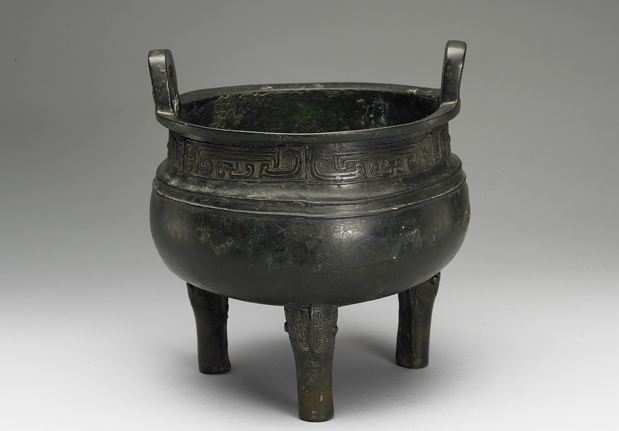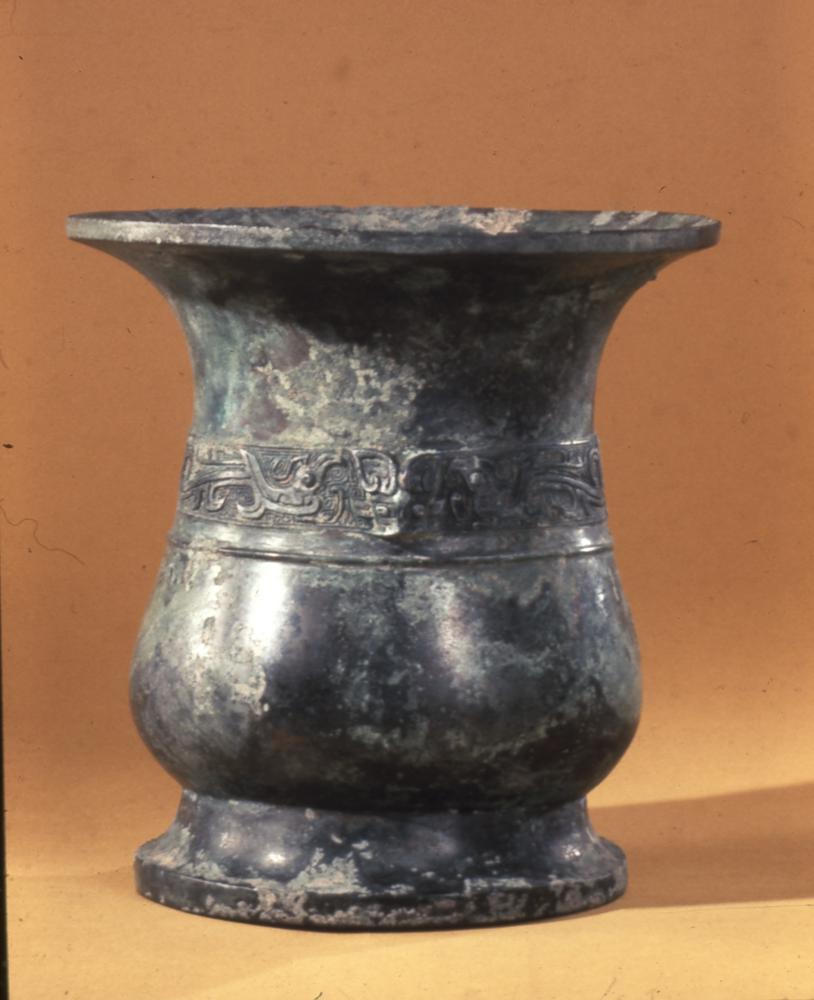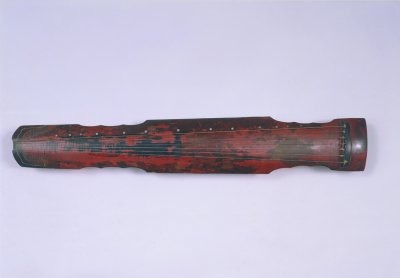Period:Ming dynasty Production date:1580-1610 (circa)
Materials:porcelain
Technique:glazed, underglazed,
Subjects:bird
Dimensions:Diameter: 13.80 centimetres Height: 7.20 centimetres
Description:
Porcelain bowl with ‘kraak’-type underglaze blue decoration. The bowl has high moulded lobed sides, a convex centre, an everted lobed rim and a tapering foot. It is painted in underglaze blue with, on the outside, six panels containing chrysanthemum; a ‘gui’-shaped bowl filled with peach and pomegranate; camellia; a ‘gui’-shaped censer with persimmon and pomegranate; peony; a ‘gui’-shaped bowl with ‘ruyi’ fungus and other plants. These panels alternate with narrow panels containing lozenges and dots or yin/yang symbols and dots. Inside the bowl is depicted a bird, usually described as a crow, on a rock surrounded by radiating panels containing alternating highly stylized flowering and fruiting plants separated by narrow panels with beaded designs.
IMG
![图片[1]-bowl BM-Franks.1587-China Archive](https://chinaarchive.net/Ming dynasty/Ceramics/mid_00266373_001.jpg)
Comments:Harrison-Hall 2001:Such bowls have many uses. Some were used in Holland to drink kandeel, a drink made with eggs, milk, wine, sugar and cinnamon, served when a child was born. Kandeebkoppen are frequently listed as items on the shipping lists of the Dutch East India Company. Many similar bowls were recovered from the cargo of the Dutch East Indiaman the Witte Leeuw which sank in 1613 (see BM 1921.1107.1).
Materials:porcelain
Technique:glazed, underglazed,
Subjects:bird
Dimensions:Diameter: 13.80 centimetres Height: 7.20 centimetres
Description:
Porcelain bowl with ‘kraak’-type underglaze blue decoration. The bowl has high moulded lobed sides, a convex centre, an everted lobed rim and a tapering foot. It is painted in underglaze blue with, on the outside, six panels containing chrysanthemum; a ‘gui’-shaped bowl filled with peach and pomegranate; camellia; a ‘gui’-shaped censer with persimmon and pomegranate; peony; a ‘gui’-shaped bowl with ‘ruyi’ fungus and other plants. These panels alternate with narrow panels containing lozenges and dots or yin/yang symbols and dots. Inside the bowl is depicted a bird, usually described as a crow, on a rock surrounded by radiating panels containing alternating highly stylized flowering and fruiting plants separated by narrow panels with beaded designs.
IMG
![图片[1]-bowl BM-Franks.1587-China Archive](https://chinaarchive.net/Ming dynasty/Ceramics/mid_00266373_001.jpg)
Comments:Harrison-Hall 2001:Such bowls have many uses. Some were used in Holland to drink kandeel, a drink made with eggs, milk, wine, sugar and cinnamon, served when a child was born. Kandeebkoppen are frequently listed as items on the shipping lists of the Dutch East India Company. Many similar bowls were recovered from the cargo of the Dutch East Indiaman the Witte Leeuw which sank in 1613 (see BM 1921.1107.1).
© Copyright
The copyright of the article belongs to the author, please keep the original link for reprinting.
THE END





